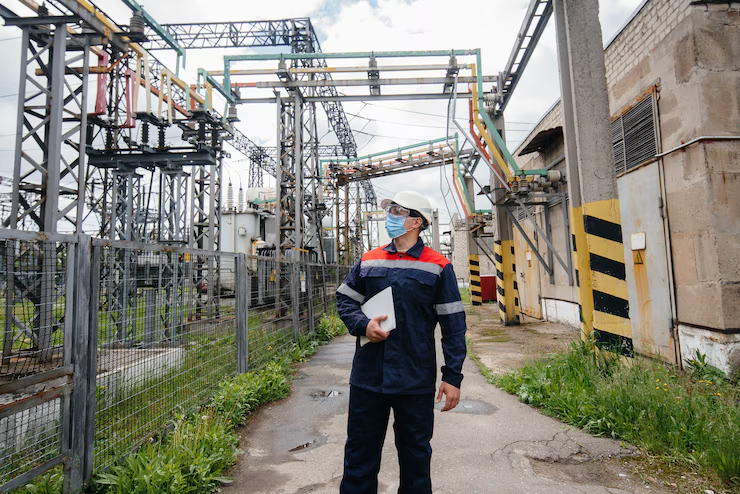Source: https://www.freepik.com/
Residential electrical contractors face unique challenges when it comes to ensuring safety on the job. One of the most critical risks they encounter is that of arc flash incidents. Arc flash is a sudden release of electrical energy through the air when a high-voltage gap exists and there is a breakdown between conductors. This can result in explosive consequences, including intense heat, blinding light, and a pressure wave that can propel debris and cause serious injury or even death. Understanding and mitigating arc flash risks are paramount for residential electrical contractors to protect themselves, their teams, and their clients.
The Importance of Arc Flash Risk Assessment
Before delving into mitigation strategies, residential electrical contractors need to conduct a thorough arc flash risk assessment. This assessment helps identify potential hazards in electrical systems and equipment, determining the likelihood and severity of arc flash incidents. By understanding the specific risks involved, contractors can tailor their mitigation efforts effectively.
Conducting a Comprehensive Hazard Analysis
A comprehensive hazard analysis involves examining the electrical system layout, equipment ratings, and operational procedures within residential settings. Identifying potential points of failure, such as inadequate equipment maintenance or improper installation, is crucial. Residential contractors must also consider environmental factors like humidity and temperature variations that can impact electrical performance and increase arc flash risks.
Utilizing Personal Protective Equipment (PPE)
Personal Protective Equipment (PPE) plays a pivotal role in mitigating arc flash risks on residential job sites. Residential electrical contractors and their teams must wear appropriate arc-rated clothing, face shields, gloves, and footwear designed to withstand the thermal and pressure effects of arc flashes. Regular inspection and maintenance of PPE are essential to ensure its effectiveness and reliability.
Implementing Arc Flash Warning Labels
Proper labeling of electrical equipment with arc flash warning labels is a fundamental safety measure. These labels provide critical information about potential arc flash hazards and the necessary precautions to be taken before performing work on or near energized equipment. Residential electrical contractors should ensure that labels are clear, visible, and updated as needed to reflect any changes in equipment or conditions.
Ensuring Compliance with Safety Standards and Regulations
Adherence to safety standards and regulations is non-negotiable for residential electrical contractor. Organizations such as the National Fire Protection Association (NFPA) and the Occupational Safety and Health Administration (OSHA) provide guidelines and regulations specifically addressing arc flash hazards. Staying informed about and compliant with these standards not only enhances safety but also mitigates legal and financial risks.
Training and Educating Team Members
Education and training are foundational to preventing arc flash incidents. Residential electrical contractors must ensure that their team members receive comprehensive training on arc flash hazards, safe work practices, emergency procedures, and the proper use of PPE. Ongoing education keeps teams updated on the latest safety protocols and reinforces a culture of safety within the organization.
Implementing a Lockout/Tagout (LOTO) Program
A robust Lockout/Tagout (LOTO) program is essential for controlling hazardous energy sources during maintenance and repair work. Residential electrical contractors should develop and implement clear LOTO procedures that include isolating electrical circuits, de-energizing equipment, and verifying absence of voltage before beginning work. Strict adherence to LOTO protocols minimizes the risk of accidental energization and subsequent arc flash incidents.
Performing Regular Equipment Maintenance
Routine maintenance of electrical equipment is critical to reducing arc flash risks in residential settings. Residential electrical contractors should establish a proactive maintenance schedule that includes inspections, testing, and servicing of electrical systems and components. Addressing potential issues promptly helps prevent equipment malfunctions that could lead to arc flash incidents.
Employing Engineering Controls
In addition to administrative and procedural controls, engineering controls play a vital role in arc flash mitigation. For residential electrical contractors, this may involve upgrading to arc-resistant switchgear, installing current-limiting devices, or implementing arc flash mitigation systems that reduce the energy released during an arc flash incident. Engineering solutions should be selected based on the specific needs and risks identified during the hazard analysis.
Conducting Job Hazard Analysis (JHA) Before Each Task
Before commencing any electrical work, residential contractors should conduct a Job Hazard Analysis (JHA) to assess potential risks and determine appropriate mitigation measures. This proactive approach helps identify and address specific hazards associated with the task at hand, ensuring that adequate controls are in place to prevent arc flash incidents.
Promoting a Safety-First Culture
Creating a safety-first culture is paramount to mitigating arc flash risks effectively. Residential electrical contractors should prioritize safety in every aspect of their operations, from planning and execution to supervision and review. Encouraging open communication about safety concerns, recognizing and rewarding safe behaviors, and fostering continuous improvement through feedback and training contribute to a workplace where safety is ingrained in every action.
Conclusion
Arc flash risks pose significant dangers to residential electrical contractors and their teams. By understanding these risks and implementing comprehensive mitigation strategies, contractors can enhance safety, protect lives, and uphold their commitment to delivering quality electrical services. From conducting thorough risk assessments to investing in proper training and equipment, every proactive measure contributes to a safer residential electrical work environment. Prioritizing safety not only safeguards individuals but also strengthens the reputation and reliability of residential electrical contractors in their communities.
